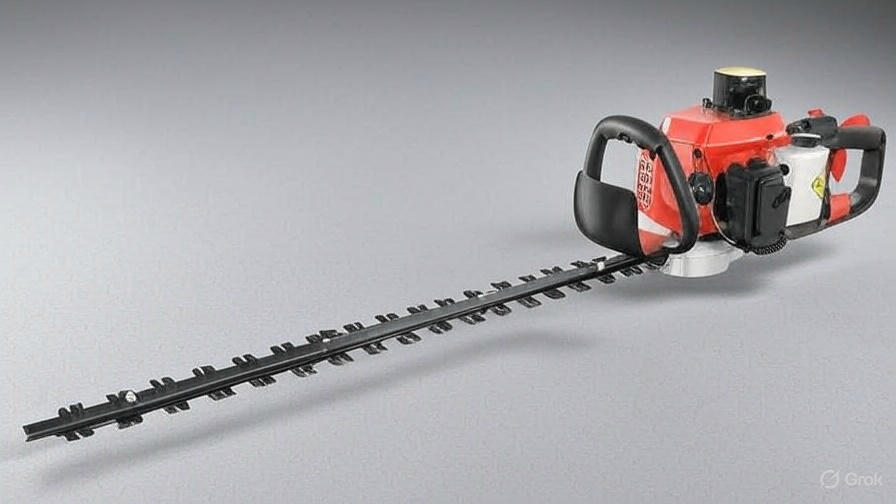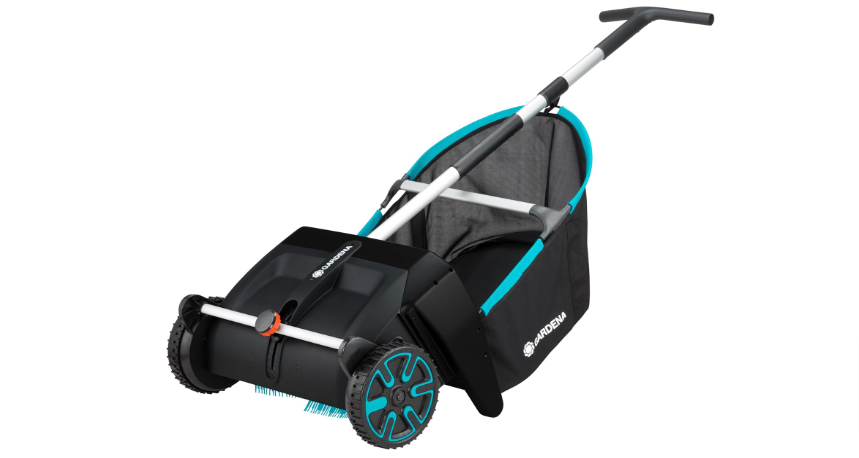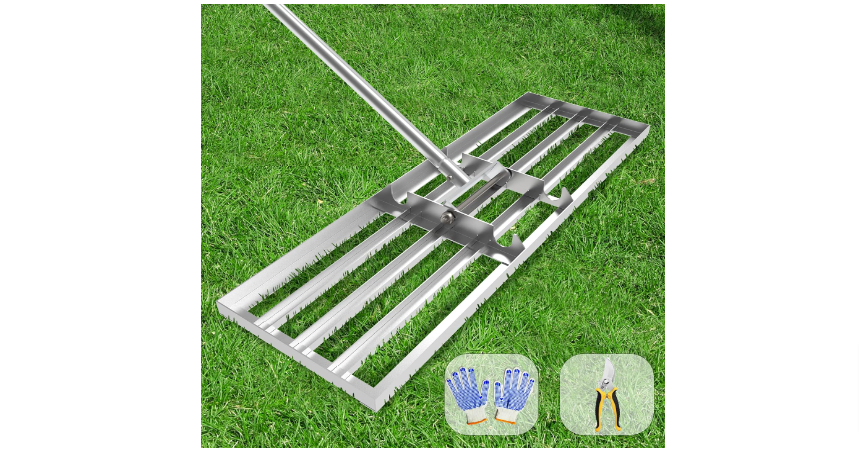Maintaining perfectly manicured hedges and shrubs requires the right tools for the job. While electric hedge trimmers offer convenience, nothing beats the raw power and mobility of a gas-powered hedge trimmer when tackling thick branches and overgrown bushes. Gas hedge trimmers deliver professional-grade performance without the limitations of cords or battery life, making them the preferred choice for homeowners with extensive landscaping needs and professional landscapers alike.
The market offers numerous gas-powered hedge trimmer options, each with unique features and capabilities. Choosing the right model depends on your specific needs, the size of your property, and the type of vegetation you’ll be trimming. This comprehensive guide examines five top-performing gas hedge trimmers, analyzing their features, performance, and value to help you make an informed decision.
Contents
- What Makes Gas Powered Hedge Trimmers Superior?
- Top 5 Best Gas Powered Hedge Trimmers Reviewed
- Key Features to Consider When Buying Gas Hedge Trimmers
- Maintenance Tips for Gas Powered Hedge Trimmers
- Safety Guidelines for Gas Hedge Trimmer Operation
- Comparing Gas vs Electric Hedge Trimmers
- Professional vs Homeowner Models
- Seasonal Hedge Trimming Best Practices
- Conclusion
What Makes Gas Powered Hedge Trimmers Superior?
Gas-powered hedge trimmers excel in several key areas compared to their electric counterparts. The combustion engine provides significantly more cutting power, enabling these tools to slice through thick branches up to 1.5 inches in diameter with ease. This increased power translates to faster work completion and cleaner cuts that promote healthy plant growth.
Portability stands as another major advantage. Gas hedge trimmers operate independently of power outlets, allowing users to work anywhere on their property without dragging extension cords or worrying about power limitations. This freedom becomes particularly valuable when working on large properties or in areas far from electrical sources.
The durability factor cannot be overlooked either. Professional-grade gas engines are built to withstand heavy use and challenging conditions. With proper maintenance, a quality gas hedge trimmer can provide decades of reliable service, making it a worthwhile investment for serious gardeners and landscaping professionals.
Top 5 Best Gas Powered Hedge Trimmers Reviewed
1. 24-Inch 26cc 2 Cycle Gas Powered Dual Sided Hedge Trimmer (Orange)
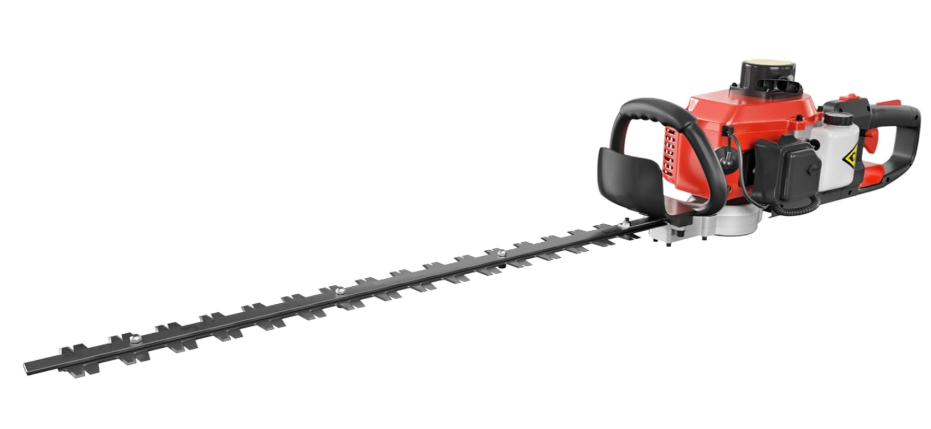
This vibrant orange hedge trimmer combines power with precision, featuring a reliable 26cc two-cycle engine that delivers consistent performance across various trimming tasks. The 24-inch dual-sided blade provides excellent reach and cutting capacity, making it ideal for both residential and light commercial applications.
The dual-action blade design reduces vibration significantly compared to single-action alternatives, resulting in less user fatigue during extended trimming sessions. The sharp, precision-ground teeth cut cleanly through branches up to one inch in diameter, promoting healthy regrowth and maintaining the aesthetic appeal of your hedges.
Ergonomic design elements include a comfortable grip handle and well-balanced weight distribution. The orange color scheme not only looks professional but also enhances visibility during operation, contributing to safer working conditions. The engine starts reliably with a properly functioning recoil system, though like all two-cycle engines, it requires a gas-oil mixture for operation.
Users appreciate the trimmer’s relatively lightweight construction, which reduces arm strain during overhead trimming tasks. The blade guard included with the unit protects both the cutting edges and users during storage and transport. Maintenance requirements remain minimal, requiring only basic two-cycle engine care and periodic blade sharpening.
Pros:
- Excellent power-to-weight ratio
- Dual-sided cutting efficiency
- Vibration-dampening technology
- Reliable starting system
- Comfortable ergonomic design
Cons:
- Requires gas-oil mixture preparation
- May need more frequent blade sharpening with heavy use
- Limited warranty coverage compared to premium brands
2. 48cc Gas Hedge Trimmer with Extension Pole – The Ultimate Versatile Tool

This powerhouse hedge trimmer stands out with its impressive 48cc engine, delivering exceptional cutting power for the most demanding trimming tasks. The inclusion of an extension pole transforms this tool into a multi-purpose landscaping solution, capable of reaching high branches and tall hedges without requiring ladders or elevated platforms.
The robust two-cycle engine provides ample torque for cutting through thick, woody stems that would challenge smaller trimmers. This makes it particularly valuable for property owners dealing with overgrown hedges or mature shrubs that require aggressive pruning. The pole saw attachment capability expands its utility beyond hedge trimming into tree maintenance territory.
Professional landscapers often prefer this model for its versatility and power. The extension pole allows safe trimming of hedges up to 12 feet high, significantly reducing the need for climbing equipment. The cutting head can be adjusted to various angles, enabling precise trimming of hedge tops and sides from ground level.
Construction quality reflects its professional target market, with heavy-duty components designed to withstand commercial use. The fuel tank capacity supports extended operation periods, reducing the frequency of refueling breaks during large projects. The anti-vibration system, while present, may not match the sophistication found in premium models.
Pros:
- Exceptional 48cc engine power
- Extension pole for high reach trimming
- Versatile pole saw capability
- Professional-grade construction
- Large fuel tank capacity
Cons:
- Heavier than standard hedge trimmers
- Higher fuel consumption
- More complex assembly and maintenance
- Significant investment for casual users
3. SENIX 4QL 26.5cc 4-Cycle Gas Hedge Trimmer – The Maintenance-Free Choice
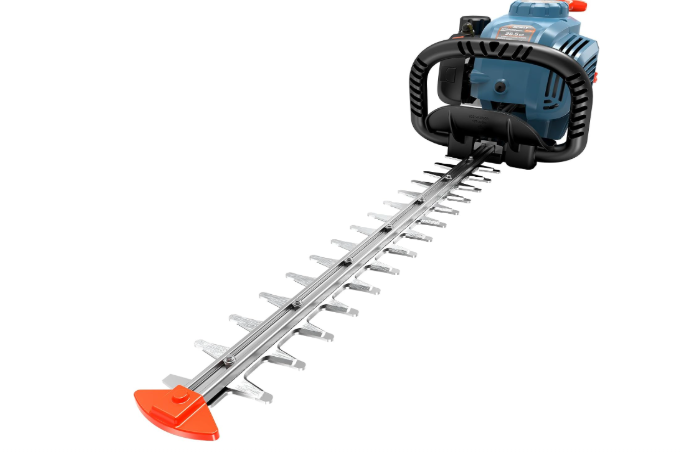
The SENIX 4QL revolutionizes gas hedge trimmer ownership with its innovative four-cycle engine design. Unlike traditional two-cycle engines that require gas-oil mixing, this trimmer operates on straight gasoline, eliminating the guesswork and mess associated with fuel preparation. This convenience factor alone makes it attractive to homeowners who want gas power without the maintenance complexity.
The 22-inch dual-action blade delivers impressive cutting capacity with reduced vibration, thanks to the counter-rotating blade design. The cutting capacity of 1-1/8 inches handles most residential hedge trimming needs effectively. The four-cycle engine runs cleaner and quieter than two-cycle alternatives, making it more environmentally friendly and neighbor-considerate.
Build quality reflects SENIX’s commitment to user-friendly design. The comfortable grip handles feature anti-slip surfaces, providing secure control even during extended use. The balanced weight distribution minimizes fatigue, while the included blade cover protects the cutting edges during storage and transport.
Starting the four-cycle engine proves easier and more reliable than many two-cycle alternatives. The pull-start system engages smoothly, and the engine reaches operating temperature quickly. Fuel efficiency surpasses most two-cycle competitors, providing longer runtime per tank while producing fewer emissions.
The manufacturer backs this trimmer with a comprehensive warranty that reflects confidence in the product’s durability. Replacement parts and service support are readily available through authorized dealers, ensuring long-term ownership satisfaction.
Pros:
- Four-cycle engine requires no oil mixing
- Cleaner, quieter operation
- Excellent fuel efficiency
- Comfortable ergonomic design
- Comprehensive warranty coverage
Cons:
- Slightly heavier than two-cycle alternatives
- Higher initial purchase price
- May require more frequent oil changes
- Limited cutting capacity for very thick branches
4. Poulan Pro PR2322 – The Reliable Workhorse
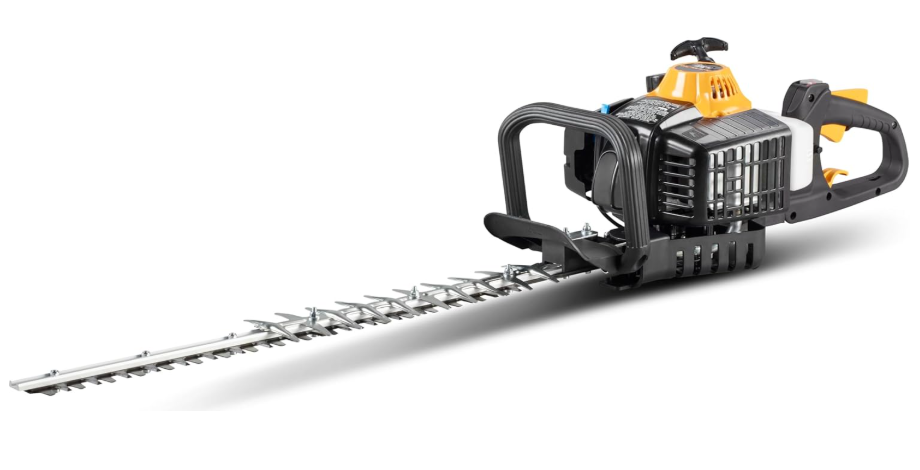
Poulan Pro has built a solid reputation in outdoor power equipment, and the PR2322 hedge trimmer exemplifies their commitment to reliable, affordable performance. The 23cc two-cycle engine provides ample power for most residential hedge trimming tasks while maintaining reasonable fuel efficiency and manageable weight.
The 22-inch dual-sided blade features sharp, durable teeth designed to maintain their edge through extensive use. The blade design incorporates debris-clearing features that prevent clogging during operation, maintaining cutting efficiency even when working with leafy hedges or branches with multiple small shoots.
Ease of use characterizes this trimmer’s design philosophy. The starting system works reliably when properly maintained, and the controls are intuitively placed for comfortable operation. The handle design accommodates users of various heights and grip preferences, while the anti-vibration system reduces fatigue during extended trimming sessions.
Maintenance requirements align with industry standards for two-cycle engines. Regular cleaning, proper fuel mixture preparation, and periodic air filter replacement keep the engine running smoothly. The spark plug accessibility simplifies routine maintenance, and replacement parts are widely available at competitive prices.
Value proposition represents a key strength of the PR2322. It delivers professional-grade performance at a price point accessible to budget-conscious homeowners. While it may lack some premium features found in higher-priced models, it provides reliable service for typical residential applications.
Pros:
- Excellent value for money
- Reliable two-cycle engine performance
- Comfortable ergonomic design
- Widely available parts and service
- Proven brand reputation
Cons:
- Basic feature set compared to premium models
- Standard vibration levels
- Plastic components may wear over time
- Limited cutting capacity for very thick material
5. 24-Inch 42cc Dual Sided Blade Hedge Trimmer (Black) – The Power Balance Champion
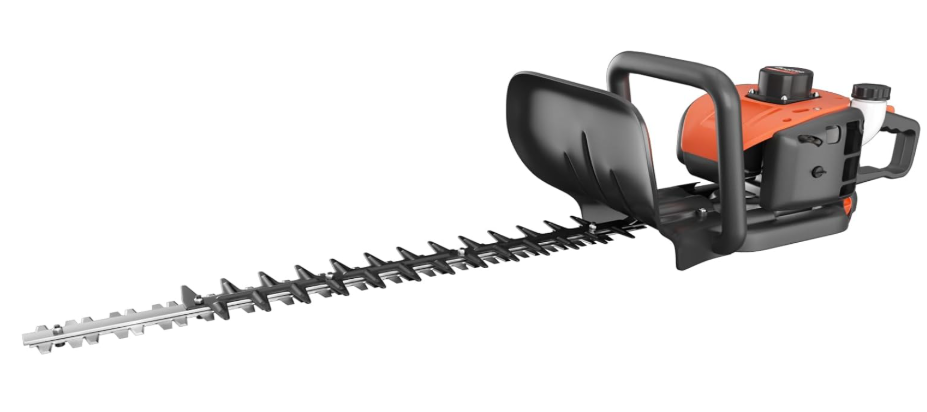
This sleek black hedge trimmer strikes an impressive balance between power and manageability, featuring a robust 42cc two-cycle engine housed in a surprisingly lightweight design. The 24-inch dual-sided blade provides excellent reach and cutting capacity while maintaining the agility needed for detailed trimming work.
The powerful 42cc engine delivers impressive torque for its displacement, enabling clean cuts through branches up to 1.25 inches in diameter. This cutting capacity handles most residential hedge trimming requirements while providing reserve power for occasional heavy-duty tasks. The engine design emphasizes fuel efficiency without sacrificing performance.
Ergonomic considerations receive significant attention in this model’s design. The handle placement and grip angles reduce wrist strain during operation, while the overall weight distribution feels natural during use. The anti-vibration system performs effectively, allowing for extended operation periods without excessive fatigue.
The dual-sided blade design incorporates precision-ground teeth that maintain their sharpness through extensive use. The blade geometry promotes efficient debris clearance, preventing clogging that can slow cutting progress. The cutting action produces clean, precise cuts that promote healthy plant recovery and growth.
Construction quality reflects modern manufacturing standards, with durable materials and components designed for longevity. The black finish not only looks professional but also resists scratches and wear better than some painted alternatives. The included blade guard protects both the cutting edges and users during storage.
Pros:
- Powerful 42cc engine in lightweight package
- Excellent cutting capacity
- Effective anti-vibration system
- Professional appearance and construction
- Good fuel efficiency for its power class
Cons:
- May require more frequent maintenance than lower-powered models
- Two-cycle engine requires fuel mixing
- Premium features come at higher cost
- May be overpowered for light trimming tasks
Key Features to Consider When Buying Gas Hedge Trimmers
Engine Size and Power Output
Engine displacement directly correlates with cutting power and capability. Smaller engines (20-30cc) suit light to moderate residential use, handling branches up to one inch in diameter effectively. Mid-range engines (30-40cc) provide excellent versatility for most homeowners, tackling thicker branches while maintaining reasonable fuel consumption. Larger engines (40cc+) deliver professional-grade performance for heavy-duty applications and commercial use.
Two-cycle engines dominate the gas hedge trimmer market due to their high power-to-weight ratio. They require mixing oil with gasoline, but this small inconvenience is offset by superior performance and lighter weight. Four-cycle engines eliminate mixing requirements and run cleaner, but they typically weigh more and cost more initially.
Blade Length and Design
Blade length significantly impacts both cutting capacity and maneuverability. Shorter blades (18-20 inches) offer superior control and precision for detailed work around obstacles and tight spaces. Medium blades (22-24 inches) provide the best balance of reach and control for most residential applications. Longer blades (26+ inches) excel at quickly trimming long, straight hedge runs but sacrifice some precision.
Dual-sided blades cut in both directions, significantly increasing trimming efficiency and reducing the time required to complete projects. Single-sided blades offer more precise control but require more passes to achieve the same results. The tooth design and spacing affect cutting performance, with aggressive teeth handling thicker material better while fine teeth produce cleaner cuts on smaller branches.
Weight and Balance Considerations
Hedge trimmer weight directly impacts user fatigue and operational comfort. Lighter models (8-12 pounds) allow for extended use with minimal strain, making them ideal for users with limited upper body strength or extensive trimming projects. Heavier models often provide more power but can become tiring during overhead work or extended sessions.
Balance plays an equally important role in user comfort. Well-balanced trimmers feel lighter than their actual weight and reduce strain on the arms and back. The handle placement and grip design should accommodate your natural working positions and hand size for optimal comfort and control.
Anti-Vibration Technology
Gas engines naturally produce vibration that transfers to the user’s hands and arms. Extended exposure to vibration can cause discomfort, fatigue, and potentially long-term health issues. Quality anti-vibration systems use springs, dampeners, or isolation mounts to minimize vibration transmission.
Effective anti-vibration systems allow for longer working sessions with reduced fatigue. They also improve cutting precision by reducing the shakiness that can affect trimming accuracy. While this feature may increase the initial cost, it significantly enhances the user experience and long-term comfort.
Starting System and Ease of Use
Reliable starting systems reduce frustration and ensure the trimmer is ready when needed. Modern gas hedge trimmers feature improved starting mechanisms, including spring-assisted pull cords, primer bulbs, and choke systems designed for consistent starting performance.
Easy-start features like automatic chokes, fuel pumps, and reduced-effort recoil systems make these tools more accessible to users of varying strength levels. Some models include electric starting options, though these add weight and complexity to the design.
Maintenance Tips for Gas Powered Hedge Trimmers
Regular Engine Maintenance
Proper engine maintenance ensures reliable performance and extends the trimmer’s operational life. Two-cycle engines require specific oil-to-gasoline ratios, typically 50:1 or 40:1 depending on the manufacturer’s specifications. Using the correct mixture prevents engine damage and ensures optimal performance.
Air filter maintenance prevents debris from entering the engine, which can cause premature wear and reduced performance. Clean or replace air filters regularly, especially when working in dusty conditions. Spark plug replacement should occur annually or as specified in the owner’s manual to maintain reliable starting and smooth operation.
Fuel system maintenance includes using fresh gasoline and proper storage procedures. Gasoline deteriorates over time, leading to starting problems and engine damage. Fuel stabilizers help preserve gasoline during storage periods, while proper winterization procedures prevent fuel system problems during seasonal storage.
Blade Care and Sharpening
Sharp blades cut cleanly and efficiently, reducing engine strain and producing better results. Dull blades tear rather than cut, potentially damaging plants and requiring more engine power to complete cuts. Regular blade inspection helps identify damage or excessive wear before it affects performance.
Professional blade sharpening services ensure proper angles and edge geometry, maintaining optimal cutting performance. Some users prefer to sharpen blades themselves using appropriate files and guides. Proper blade maintenance also includes cleaning debris buildup and inspecting for damage after each use.
Blade replacement becomes necessary when sharpening no longer restores cutting performance or when damage occurs. Original equipment replacement blades ensure proper fit and performance, while aftermarket options may offer cost savings but require careful selection for compatibility.
Storage and Winterization
Proper storage procedures protect the trimmer during inactive periods and ensure reliable operation when needed. Fuel system preparation includes draining the tank or adding fuel stabilizer to prevent fuel deterioration and system damage. Running the engine dry or with stabilized fuel prevents carburetor clogging and starting problems.
Clean the entire trimmer before storage, removing debris, grass clippings, and dirt that can promote corrosion or attract pests. Store the trimmer in a dry location away from temperature extremes and moisture. The blade guard should be installed to protect both the cutting edges and prevent accidental contact.
Annual service inspections by qualified technicians can identify potential problems before they cause failures. Professional servicing typically includes engine tune-ups, safety inspections, and performance verification that extends the trimmer’s service life and maintains optimal performance.
Safety Guidelines for Gas Hedge Trimmer Operation
Personal Protective Equipment
Eye protection remains the most critical safety equipment when operating gas hedge trimmers. Flying debris, wood chips, and leaves can cause serious eye injuries. Safety glasses or face shields provide necessary protection while maintaining clear vision of the work area.
Hearing protection prevents damage from prolonged exposure to engine noise. Gas hedge trimmers typically produce noise levels that can cause hearing damage with extended exposure. Ear plugs or noise-reducing headphones provide effective protection while still allowing awareness of surroundings.
Protective clothing includes long pants, closed-toe shoes with good traction, and long-sleeved shirts when working around thorny plants. Gloves improve grip control and protect hands from debris and vibration. Avoid loose clothing that could become entangled in moving parts.
Safe Operating Procedures
Pre-operation inspection ensures the trimmer is in safe working condition. Check blade security, handle integrity, and fuel system condition before starting. Verify that safety guards are properly installed and that the cutting area is clear of obstacles and bystanders.
Proper starting procedures reduce the risk of injury and equipment damage. Start the trimmer on firm, level ground with adequate clearance around the cutting head. Maintain secure footing and balanced posture throughout operation to prevent falls or loss of control.
Cutting technique affects both safety and results. Maintain firm grip on both handles and avoid overreaching or working in unstable positions. Cut from bottom to top when trimming hedge sides to maintain control and visibility. Take frequent breaks to prevent fatigue that can lead to accidents.
Environmental Considerations
Weather conditions significantly impact safe operation. Avoid trimming during wet conditions that increase slip hazards and reduce visibility. Wind can affect debris patterns and make precise cutting more difficult. High temperatures increase fatigue risks and may affect engine performance.
Be aware of hidden hazards within hedges, including electrical wires, wasp nests, or property boundaries. Inspect the work area thoroughly before beginning and proceed cautiously when encountering unknown conditions. Mark or flag any hazards that cannot be removed.
Respect noise ordinances and neighbor considerations by operating during appropriate hours. Many communities restrict power equipment use during early morning or evening hours. Consider using hearing protection-equipped models in noise-sensitive areas.
Comparing Gas vs Electric Hedge Trimmers
Power and Performance Differences
Gas hedge trimmers consistently deliver superior cutting power compared to electric alternatives. The combustion engine provides high torque output that handles thick, woody stems with ease. This power advantage becomes particularly noticeable when cutting through multiple branches simultaneously or tackling overgrown hedges.
Electric trimmers, whether corded or battery-powered, face power limitations that affect their cutting capacity. Corded models may provide consistent power but lack the peak torque of gas engines. Battery models offer portability but often sacrifice power for runtime, making them less suitable for heavy-duty applications.
Runtime represents another significant difference. Gas trimmers can operate continuously as long as fuel is available, making them ideal for large properties or commercial applications. Battery trimmers have limited runtime that decreases over time, while corded models restrict mobility to areas near power sources.
Cost Considerations
Initial purchase prices vary significantly between gas and electric models. Quality gas hedge trimmers typically cost more upfront than comparable electric models, but this investment often provides superior performance and durability. Professional-grade gas trimmers represent substantial investments but offer commercial-level capabilities.
Operating costs favor gas trimmers for heavy users. Fuel costs remain relatively low compared to electricity prices in many areas. Gas trimmers also maintain their performance over time, while battery models may require expensive battery replacements that can exceed the original tool cost.
Maintenance costs tend to be higher for gas models due to engine service requirements. Oil changes, spark plug replacements, and periodic tune-ups add to the ownership cost. Electric models require minimal maintenance but may need more frequent replacement due to their typically shorter service lives.
Environmental Impact
Emissions represent the primary environmental concern with gas hedge trimmers. Two-cycle engines produce more emissions per hour of operation than four-cycle alternatives or electric models. However, the shorter runtime required for gas trimmers to complete tasks may offset some of this disadvantage.
Noise pollution affects both operators and neighbors. Gas trimmers generally produce higher noise levels than electric alternatives, though modern designs have reduced this gap. Anti-vibration and sound-dampening technologies help minimize the impact on both users and surrounding areas.
Electric trimmers produce zero direct emissions but may indirectly contribute to pollution through electrical generation. The environmental impact depends largely on the local electrical grid’s energy sources. Battery production and disposal also create environmental considerations that offset some of the apparent environmental advantages.
Professional vs Homeowner Models
Feature Differences
Professional gas hedge trimmers incorporate heavy-duty components designed for daily commercial use. These include reinforced engine mounts, commercial-grade air filtration systems, and heavy-duty blade assemblies that withstand continuous operation. Professional models often feature larger fuel tanks and more sophisticated anti-vibration systems.
Homeowner models prioritize ease of use and affordability over maximum durability. They typically include user-friendly features like easy-start systems, lightweight construction, and simplified maintenance procedures. While not built for commercial duty cycles, quality homeowner models provide excellent service for typical residential applications.
Warranty coverage often differs significantly between professional and homeowner models. Professional models may include longer warranty periods and more comprehensive coverage, reflecting the manufacturer’s confidence in their durability. Commercial warranties may also include service loaner programs that minimize downtime for professional users.
Price and Value Analysis
Professional models command premium prices that reflect their enhanced capabilities and durability. These tools represent significant investments but provide superior performance and longevity that justify the cost for commercial users. The higher initial cost often results in lower long-term ownership costs due to reduced replacement frequency.
Homeowner models offer excellent value for residential users who don’t require commercial-grade durability. Quality homeowner trimmers provide reliable service for typical residential hedge trimming needs at accessible price points. The key is matching the tool’s capabilities to the intended use intensity.
Cost-per-use calculations help determine the best value choice. Professional models may cost more initially but provide lower cost-per-use for heavy users. Homeowner models excel for occasional use scenarios where their lower initial cost and adequate performance provide better value.
Seasonal Hedge Trimming Best Practices
Timing Considerations
Spring trimming promotes healthy new growth and allows homeowners to shape hedges before the growing season begins. Early spring trimming, before new growth starts, enables precise shaping without removing new shoots. This timing works well for most hedge species and climates.
Late spring or early summer trimming maintains hedge shape while allowing some new growth. This timing requires more frequent maintenance but keeps hedges looking neat throughout the growing season. Care must be taken to avoid disturbing nesting birds during this period.
Fall trimming prepares hedges for winter while removing any diseased or damaged growth. However, late fall trimming in cold climates may stimulate new growth that won’t have time to harden before winter, potentially causing cold damage. Regional climate considerations affect optimal timing.
Species-Specific Guidelines
Deciduous hedges benefit from winter or early spring trimming when the plant structure is visible and growth is dormant. This timing allows for structural pruning and shaping without interfering with the growing season. Most deciduous species respond well to aggressive pruning during dormancy.
Evergreen hedges require more careful timing to avoid removing too much growth at once. Light, frequent trimming maintains shape while preserving the hedge’s density and health. Major pruning should occur during active growth periods when the plant can recover quickly.
Flowering hedges need timing that considers their blooming schedule. Spring-flowering species should be trimmed immediately after flowering to avoid removing next year’s flower buds. Summer-flowering species can be trimmed during dormancy without affecting bloom production.
Maintenance Scheduling
Regular trimming schedules maintain hedge health and appearance while minimizing the workload per session. Frequent light trimming requires less effort than infrequent heavy pruning and produces better results. Most hedges benefit from 2-3 trimming sessions per growing season.
Growth rate affects trimming frequency requirements. Fast-growing species may need monthly attention during peak growing seasons, while slow-growing hedges may only require annual or bi-annual trimming. Understanding the growth characteristics of your specific hedge species helps establish appropriate schedules.
Weather monitoring helps optimize trimming schedules. Avoid trimming during drought stress periods when plants are already struggling. Post-trimming watering may be necessary during dry periods to help plants recover from pruning stress.
Conclusion
Selecting the best gas-powered hedge trimmer requires careful consideration of your specific needs, property size, and intended usage patterns. Each of the five models reviewed offers distinct advantages that make them suitable for different applications and user preferences.
The 24-inch 26cc orange trimmer provides excellent value for homeowners seeking reliable performance with manageable weight and good cutting capacity. Its dual-sided blade and vibration-dampening features make it suitable for most residential hedge trimming tasks.
The 48cc extension pole model stands out for users needing maximum versatility and power. Its ability to function as both a hedge trimmer and pole saw makes it ideal for property owners with diverse trimming needs and mature vegetation.
The SENIX 4QL four-cycle trimmer appeals to users who prioritize convenience and environmental considerations. Its straight-gas operation eliminates mixing requirements while providing clean, quiet operation and excellent fuel efficiency.
The Poulan Pro PR2322 offers proven reliability and excellent value for budget-conscious homeowners. Its straightforward design and widely available service support make it a practical choice for typical residential applications.
The 24-inch 42cc black trimmer provides professional-grade performance in a well-balanced package. Its powerful engine and refined ergonomics make it suitable for demanding applications while remaining manageable for residential users.
When making your final decision, consider factors beyond just cutting power. Evaluate the total ownership experience, including maintenance requirements, fuel efficiency, comfort features, and long-term reliability. The best gas hedge trimmer for you is the one that matches your specific needs while providing reliable service for years to come.
Remember that proper maintenance, safe operation practices, and appropriate seasonal timing will maximize your trimmer’s performance and longevity regardless of which model you choose. Invest in quality protective equipment, follow manufacturer guidelines, and don’t hesitate to seek professional service when needed to ensure optimal performance and safety.
The investment in a quality gas-powered hedge trimmer pays dividends in time saved, superior results, and the satisfaction of maintaining beautiful, healthy hedges that enhance your property’s appearance and value. Choose wisely, operate safely, and enjoy the superior performance that only gas-powered hedge trimmers can provide.
